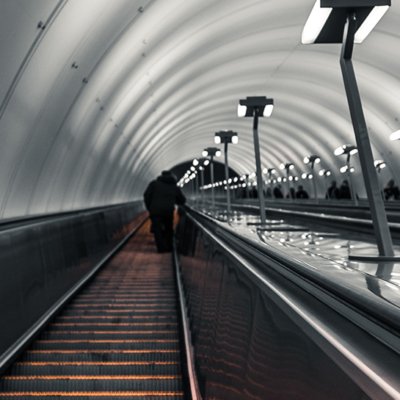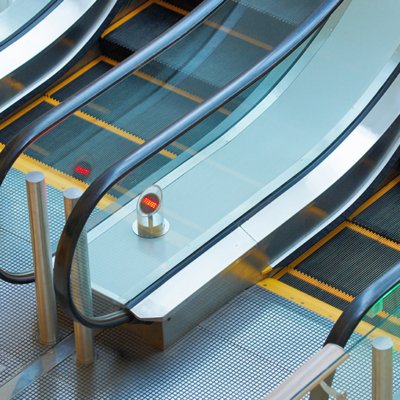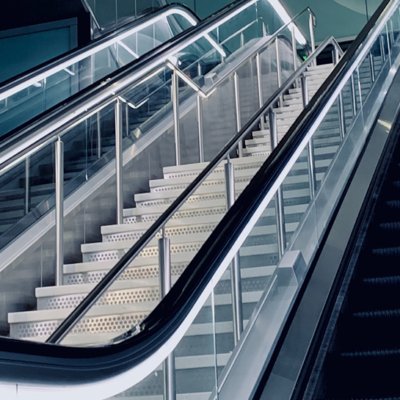Article 17- Escalator Supporting Structure (Truss)
Escalator Truss
In this article, we intend to describe the escalator truss and its requirements according to EN 115-1:2017 in detail.
The escalator has structural support which is called “Escalator Truss” where all the machinery is located and installed on. The escalator truss is divided into three main sections: Upper section, inclined section, and Lower section. Normally, the upper and lower sections are fixed and to provide variable height, the middle section can be altered.
There are two support angles at both ends of the escalator truss through which they are placed on the construction beams of the building. The support angles are not fixed (not welded, not screwed down, etc.) and are only held down by their own weight. Under the support angles, there is a layer of high-density rubber which prevents truss vibration.
The escalator truss material is made of different steel alloys and shapes (Rectangle steel, Angle steel, and Channel steel) and combinations thereof in different sizes.
A steel sheet is installed on the underside of the truss which is called “Soffit” with 5-millimeter thickness.
The escalator truss must be designed in such a way that there is no oscillation or distortion in the structure and for this purpose, jig-welding must be used which gives it high-quality joints by keeping the parts immoveable.
For the escalator truss coating, indoor escalators are coated with paint, and to provide a longer lifetime for semi-outdoor, fully-outdoor, and heavy-duty escalators (according to BS 729 - ISO1461) they are coated with hot-dip galvanized materials with a minimum thickness of 85µm.
|
Coating |
Single Coating |
Double Coating |
Special Paint |
Hot-Dip Galvanized |
|
Approximate Lifetime (Years) |
5 |
15 |
20 |
30 |
The escalator truss must support a dead weight as well as the structural rated load of 5000 N/m2 in compliance with EN 1993-1-1:2005 and the maximum deflection must not exceed 1/750 of the horizontal length between the two construction beams. In case the horizontal length of the escalator truss is too long and causes more deflection to the truss than authorized, we have to use middle support(s).
In order to ease the transportation of long escalators the truss can be divided into two or more sub-sections. To rejoin the sub-sections at the time of installation, socket-headed bolts must be used where their point was assigned and pre-drilled on jointing plates in the factory.
In order to move and reassemble escalators’ truss sections, there are some plates with holes, welded to the corners of the escalator truss to use for lifting which are called “Lifting Eye”. If the escalator truss is divided into sub-sections they must also have lifting eyes on each corner. Lifting eye facilitates the attachment of towing wires to the device. Lifting the escalator or moving walk from the unauthorized points and directions could contort the machine irreparably or could cause defects to its performance.
According to EN 115-1:2017, the escalator truss must be covered entirely by suitable imperforated panels called “Outside Cladding” after installation. The outside cladding must withstand 250 N at all points at the right angle in a 2.500 mm2 round or square area without breakage. In addition, any gaps or openings for ventilation apertures on the panels, close to moving parts with the risk of contact must be less than 4 millimeters.





